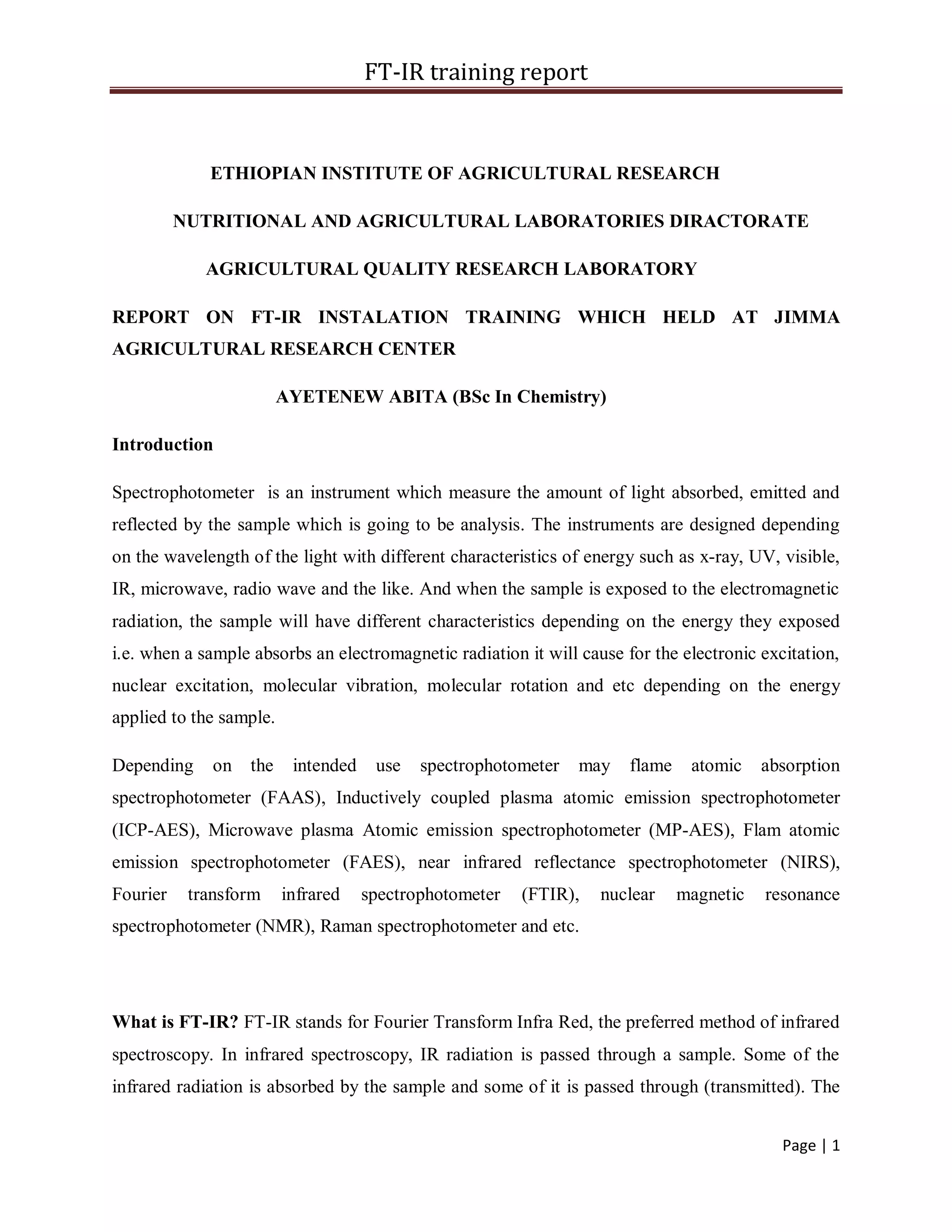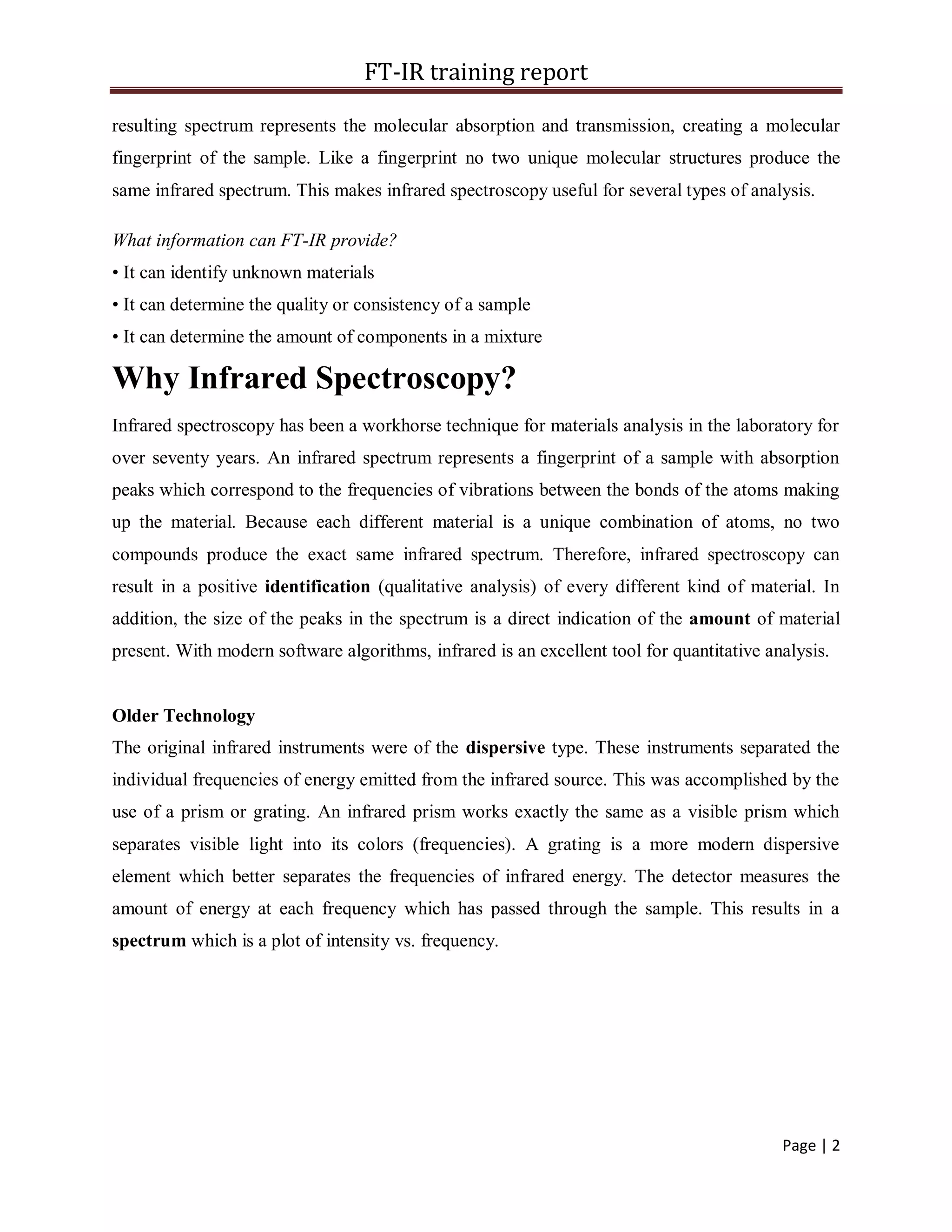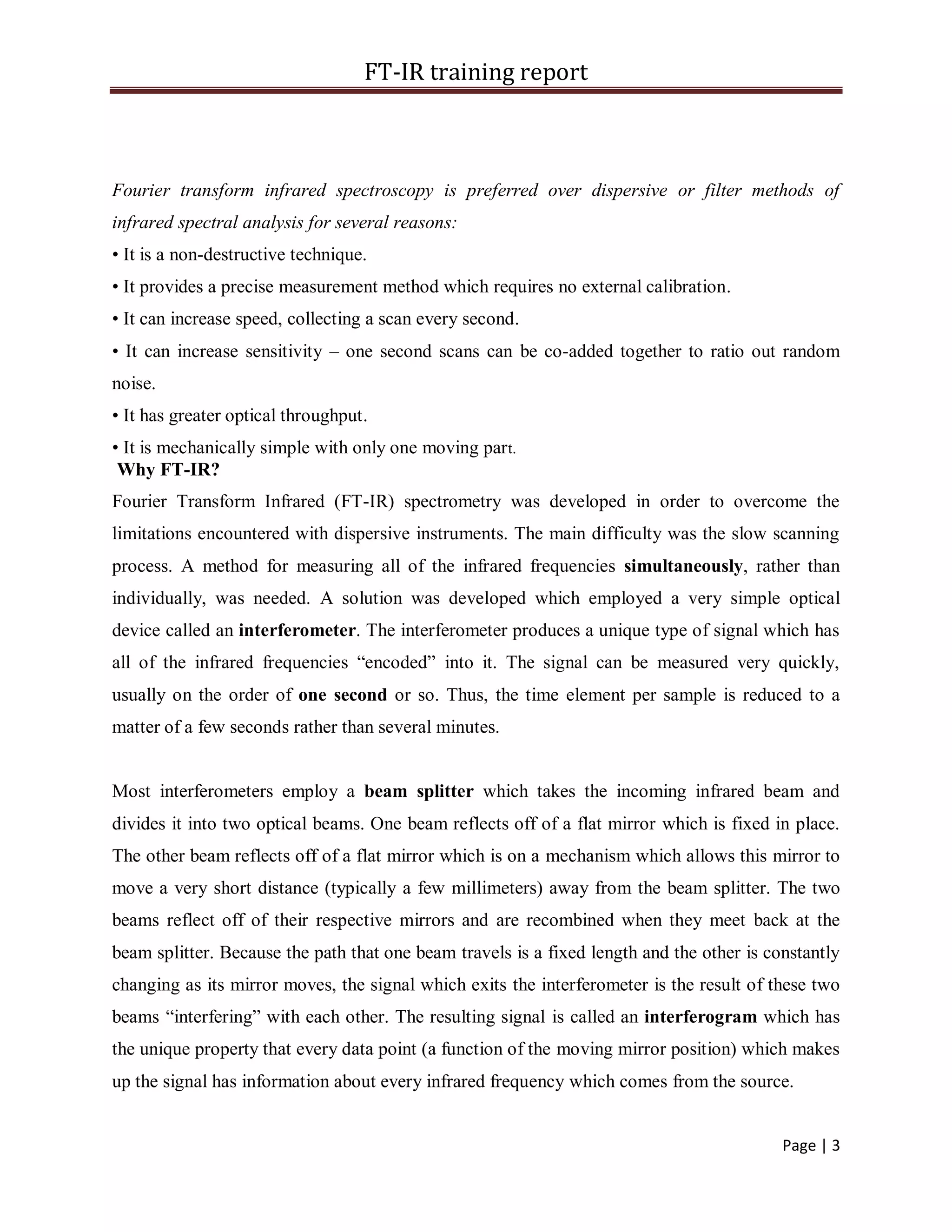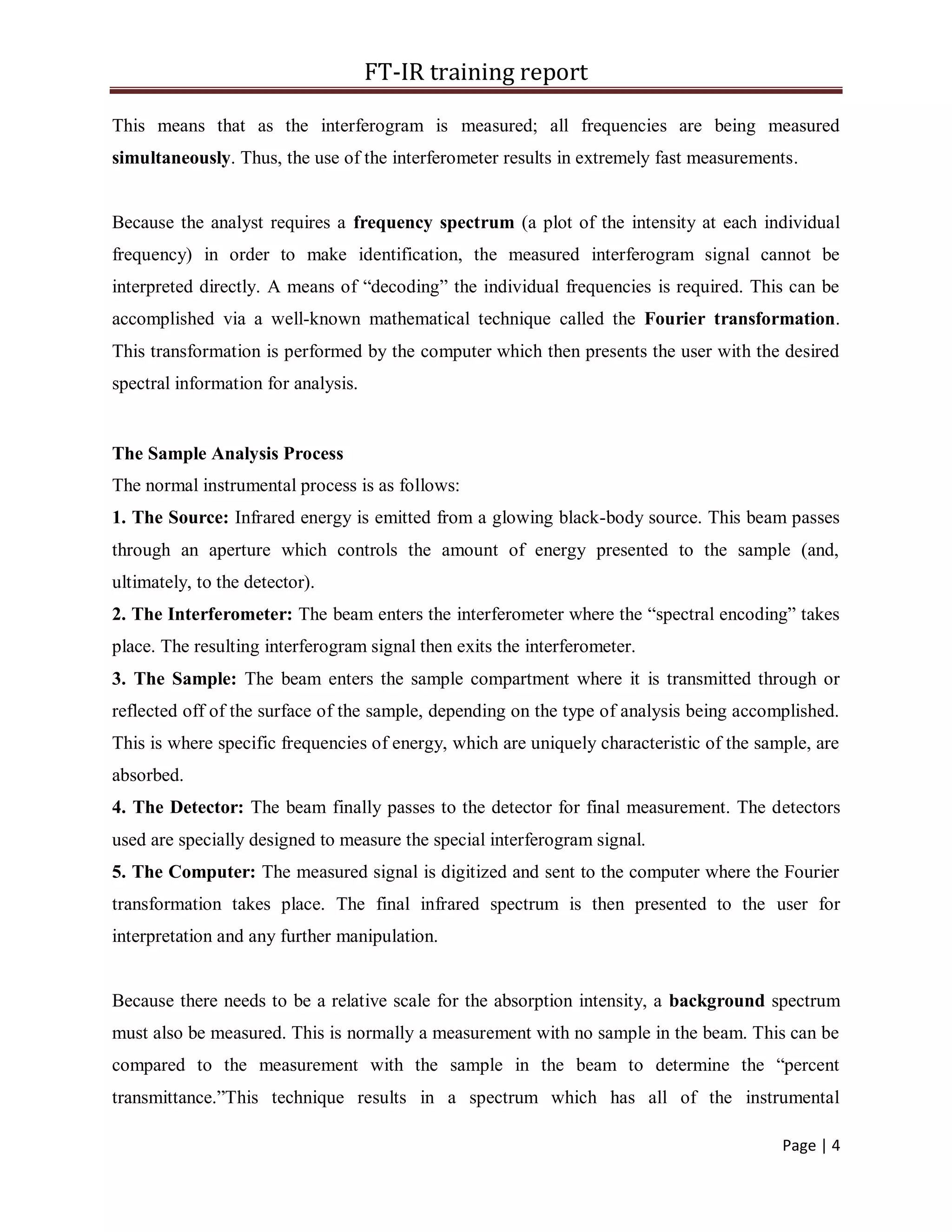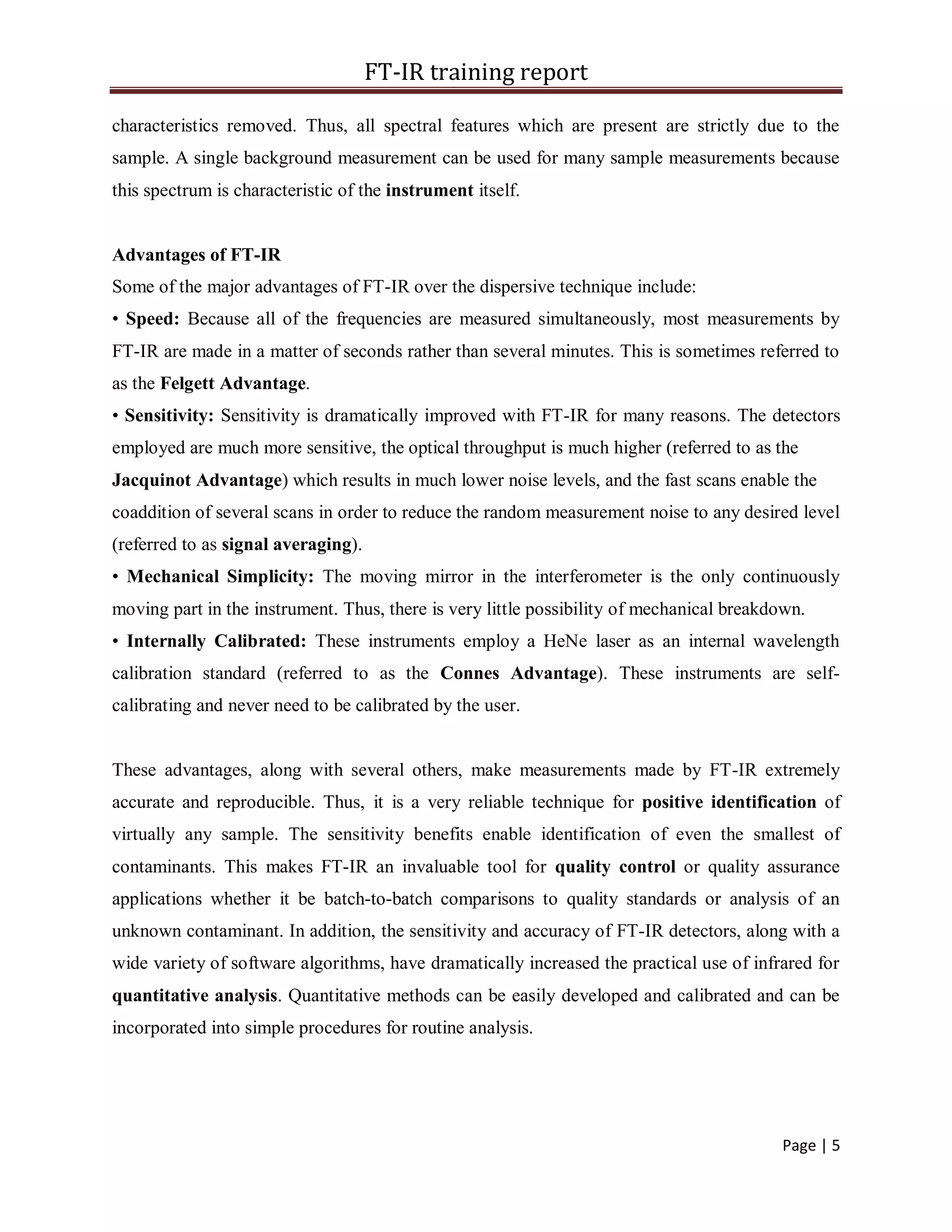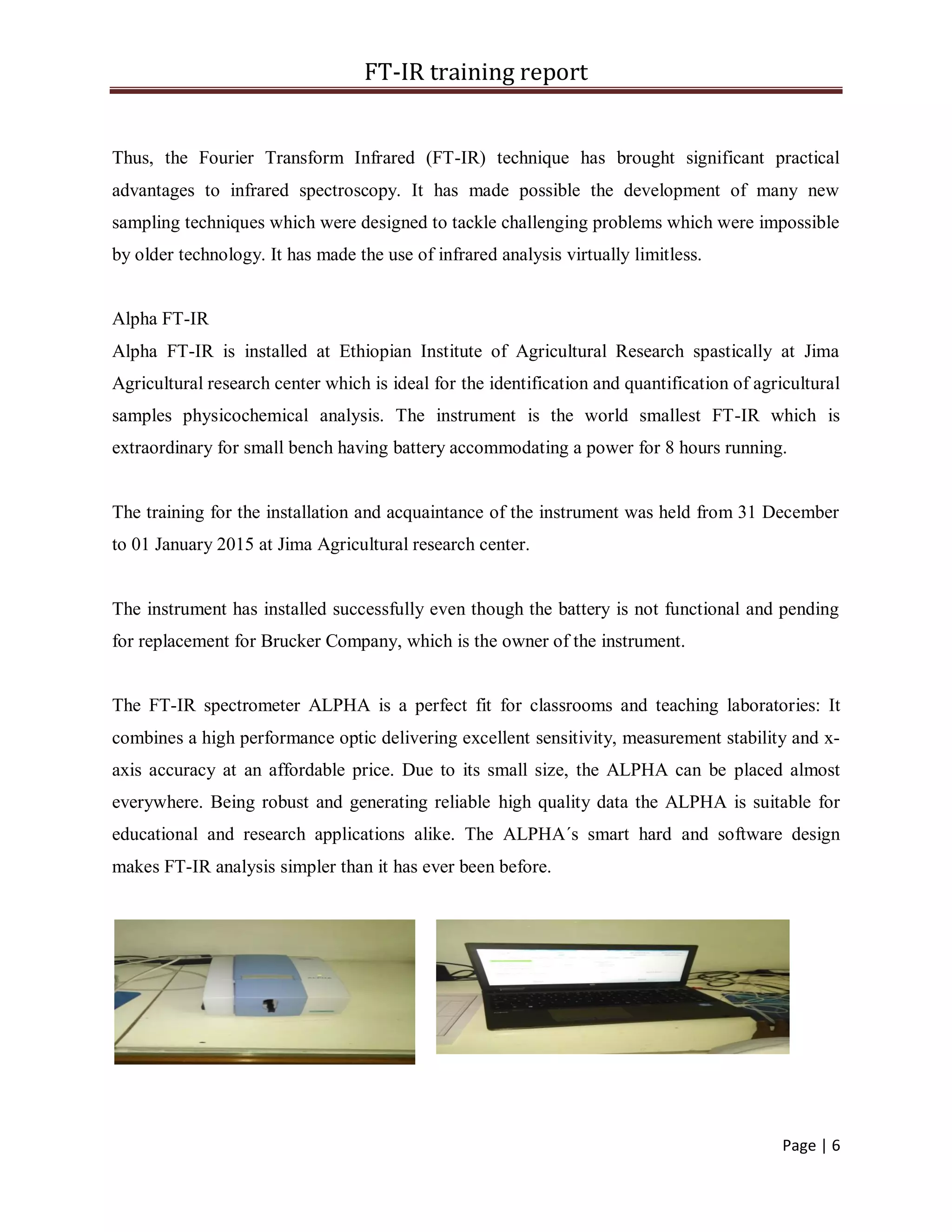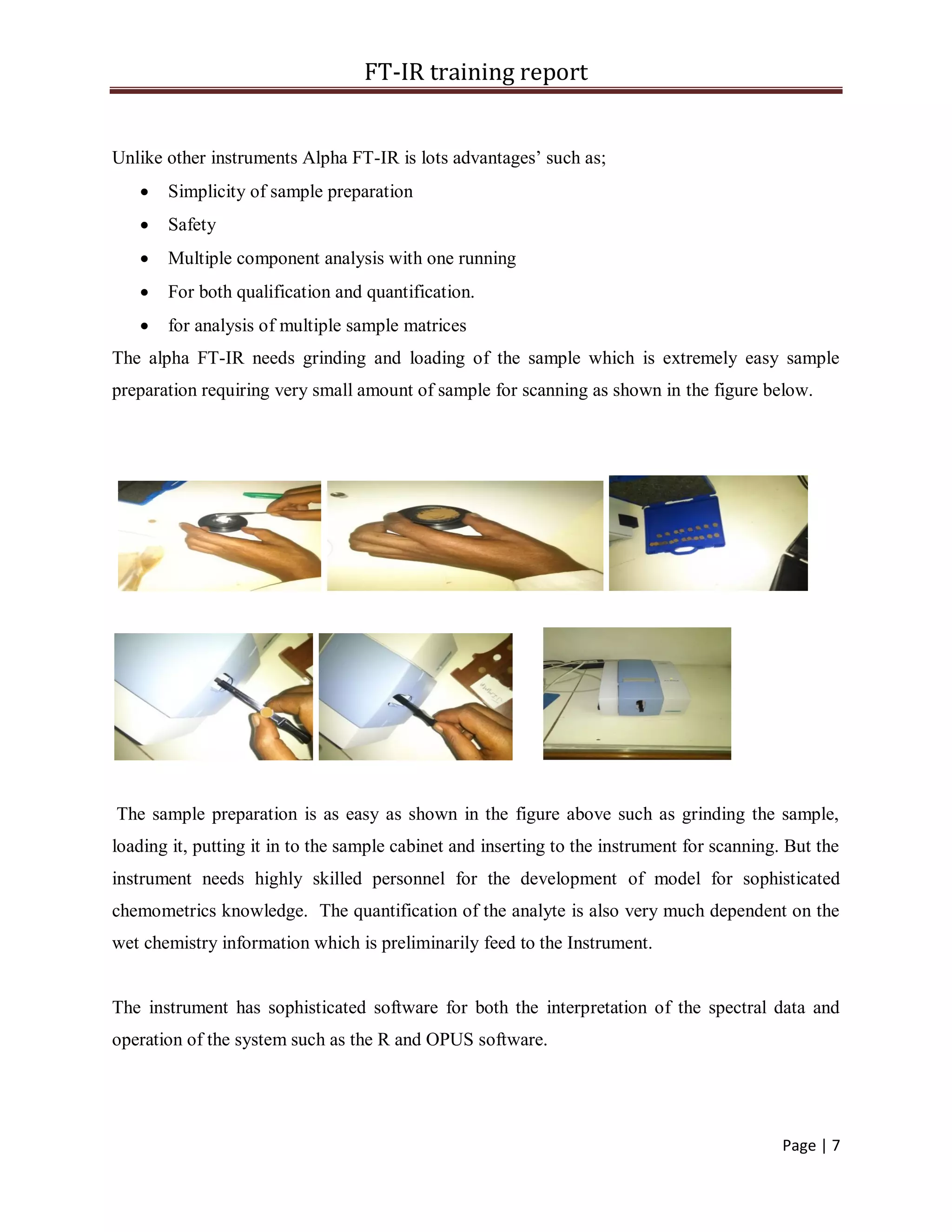The document provides a comprehensive report on Fourier Transform Infrared (FT-IR) spectroscopy training held at Jimma Agricultural Research Center, highlighting the instrument's capabilities in identifying and quantifying agricultural samples. It contrasts FT-IR with older dispersive infrared techniques, emphasizing its speed, sensitivity, and ease of use for various analyses. The report also details the installation of the Alpha FT-IR spectrometer, designed for educational and research applications, and outlines essential sample preparation and analytical considerations.
